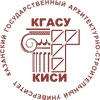About the authors
| First name, Middle name, Last name, Scientific degree, Scientific rank, Current position. Full and brief name of the organization, The organization address. | Khalitova N.N. – senior lecturer E-mail: This e-mail address is being protected from spambots. You need JavaScript enabled to view it Kazan State University of Culture and Art The organization address: 420059, Russia, Kazan, Orenburgski trakt, 3 Khalitov N.Kh. – doctor of architecture, professor E-mail: This e-mail address is being protected from spambots. You need JavaScript enabled to view it Kazan State University of Architecture and Engineering The organization address: 420043, Russia, Kazan, Zelenaya st., 1 |
| Title of the article | To the question about the origin of the double-headed bird’s image in the tatar architectural and artistic carving |
| Abstract. | Double-headed eagle for the first time tracked in Hittite monumental-decorative art as early as 13 BC and then in Egypt, Sumeria, Assyria and others. This is very common in Islamic art both in the near and Middle East, and specifically in the Tatar art. Double-headed eagle became widespread in Christian Europe in the 12-13 centuries. as a symbol of the Holy Roman Empire. From the middle of the 14 century, this Eagle was used as a generic symbol of Byzantine emperors Paleologus. In Russia it first seen on the coins of Tver (1470) of Novgorod the great in the interpretation of the Golden Horde. In Islamic art image of double-headed eagle was first noted in Andalusia in 11-12 centuries, then to the Baghdad Caliphate and Maml?k and the Seljuk reigns. In Tatar states a two-headed eagle remains primarily on the 14-th century coins, minted by Uzbek and D?anibek, and others. Such characters could not be accidental. In architectural carving wooden houses of Kazan area, motif of the double-headed eagle is not uncommon, and various forms of it in principle coincide with images of the Golden Horde coins. Numerous forms of this subject in the different areas of the Tatar decorative arts (wood carving, embroidery, weaving, leather mosaic, engraving on metal), talk about the non-randomness of this motif in the Tatar culture and relationship with some profound forms of spiritual culture and historical traditions. |
| Keywords. | Two-headed eagle, tatar architecture, wooden carvings, tatar art, islamic art, national symbols, the Golden Horde. |
| For citations: | Khalitova N.N., Khalitov N.Kh. To the question about the origin of the double-headed bird’s image in the tatar architectural and artistic carving // Izvestiya KGASU. 2013. №3(25) P.21-27. |
















